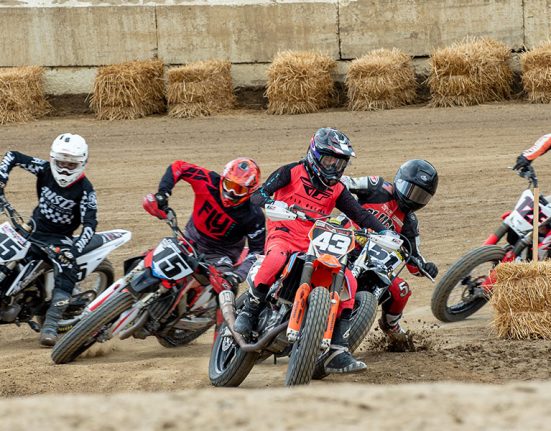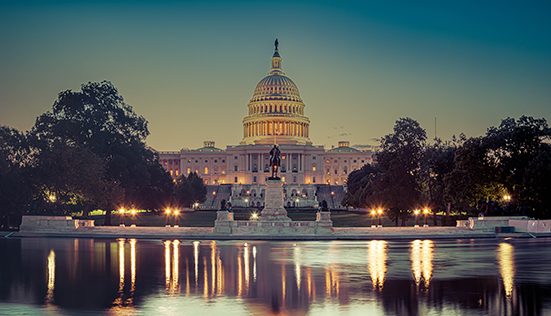The AMA endorses the practice of legalizing lane splitting and lane filtering. Given the long-term success in California and the University of California Berkeley Safe Transportation Research and Education Center (SafeTREC) study showing that it enhances motorcycle safety. “A motorcycle’s narrow width can allow it to pass between lanes of stopped or slow-moving cars on roadways where the lanes are wide enough to offer an adequate gap. This option can provide an escape route for motorcyclists who would otherwise be trapped or struck from behind. There is evidence (Hurt, 1981) that traveling between lanes of stopped or slow-moving cars (i.e., lane splitting) on multiple-lane roads (such as interstate highways) slightly reduces crash frequency compared with staying within the lane and moving with other traffic.” The AMA endorses these practices—as long as lane splitting and filtering is conducted within identified safe speeds and will assist groups and individuals working to bring legal lane splitting and filtering to their state.
Operator and passenger safety
The American Motorcyclist Association places significant emphasis on motorcycle operator and passenger safety. On every type of public roadway, motorcyclists encounter challenges from other roadway users and are constantly vigilant to unsafe conditions around them.
Perhaps one of the most dangerous situations for any motorcyclist is being caught in congested traffic, where stop-and-go vehicles, distracted and inattentive vehicle operators, and environmental conditions pose an increased risk of physical contact with another vehicle or hazard. Even minor contact under such conditions can be disastrous for motorcyclists.
The Hurt Report1, the most comprehensive motorcycle crash causation study to date, noted that, “Moderate or heavy traffic was the situation at 59.2 percent of the accidents [studied].” Reducing a motorcyclist’s exposure to vehicles that are frequently accelerating and decelerating on congested roadways can be one way to reduce rear-end collisions for those most vulnerable in traffic.
In many countries (excluding the United States), lane splitting and filtering are normal practices for motorcyclists. Particularly in the highly urbanized areas of Europe and Asia, motorcycle and scooter operators are expected to pass between conventional vehicles and filter (advance) to the front of the group.
The SafeTREC report in 2015 concludes that motorcyclists who split lanes in heavy traffic are significantly less likely to be struck from behind by other motorists, are less likely to suffer head or torso injuries, and are less likely to sustain fatal injuries in a crash.2
One of the recommendations in the National Agenda for Motorcycle Safety (NAMS)3 is: “Study the safety implications of lane splitting.” In support of this recommendation, the report states:
“A motorcycle’s narrow width can allow it to pass between lanes of stopped or slow-moving cars on roadways where the lanes are wide enough to offer an adequate gap. This option can provide an escape route for motorcyclists who would otherwise be trapped or struck from behind. There is evidence (Hurt, 1981) that traveling between lanes of stopped or slow-moving cars (i.e., lane splitting) on multiple-lane roads (such as interstate highways) slightly reduces crash frequency compared with staying within the lane and moving with other traffic.
“Although lane splitting is allowed in just a few areas of the United States, notably California, it appears to be worthy of further study because it offers a means of reducing congestion in addition to possible safety benefits. It is widely used in many other countries.”
In a statement issued by the Motorcycle Industry Council in 20114, the trade group states: “In full consideration of the risks and benefits of lane splitting, the Motorcycle Industry Council supports state laws that allow lane splitting under reasonable restrictions.”
For decades, California was the only state to permit lane splitting5. However, legislatively, there has been activity on lane splitting in several states. Currently the practice is allowed under a variety of conditions in California, Utah, Arizona, Montana and Colorado. Minnesota has passed legislation that will allow it beginning July 1, 2025
Passing legislation to permit lane splitting is often the first step. Significant efforts to educate riders, and the general motoring public on the benefits. should also be instituted. Using public service announcements and other forms of information sharing could assist in highlighting the safety, congestion reduction, and other benefits of lane splitting.
The AMA endorses rider responsibility and actions that make roadways safer for motorcyclists. Experience has taught us that the legislative process and the implementation of new laws are fraught with uncertainty. A straightforward lane splitting bill may easily be amended with provisions that the AMA and the motorcycling community would find unacceptable. Provisions such as mandatory helmet use in an adult-choice state or mandatory minimum medical insurance coverage provisions would quickly poison an otherwise well-intentioned effort.
Motorcyclists who oppose lane splitting should remember that even where allowed it remains optional. Permitting lane splitting is not the same as requiring it, so those opposed to the practice should consider the desires of other motorcyclists who believe they would benefit from it. Lane splitting is an issue of choice.
Even with the best intentions and organization, inappropriate behavior by motorcyclists can quickly garner a large negative response from the motoring public. For example, a few postings of public roadway stunting or riders recklessly speeding past motorists stuck in traffic, could sour a legitimate campaign to win approval for lane splitting in a state.
While the AMA has long advocated responsible riding practices and does not condone any behavior that violates the rules of the road, we caution that the future of lane splitting in any state could be derailed by the actions of a few irresponsible riders. Advocates of lane splitting should be prepared to counter any negative responses they receive from legislators and those responsible for implementing associated laws.
Given the ongoing success of lane splitting in California6 and the recent enthusiasm for lane splitting and/or filtering in other states, the AMA endorses these practices and will assist groups and individuals working to bring legal lane splitting and/or filtering to their states.
1 Hurt, H.H. Jr., Ouellet, J.V. & Thom D.R. (1981b). Motorcycle Accident Cause Factors and Identification of Countermeasures. (DOT HS 805 862). Washington, DC: National Highway Traffic Safety Administration, page 57. Download the Hurt report here.
2 Rice, Thomas, Troszak, Lara and Erhardt, Taryn (2015). Motorcycle Lane-splitting and Safety in California. May 29, 2015, page 5. See the full report here.
3 National Agenda for Motorcycle Safety, U.S. Department of Transportation, National Highway Traffic Safety Administration. (DOT HS 809 156), 2000, page 51. The full text is available here.
4 “Position on Lane Splitting,” Motorcycle Industry Council (MIC), Dec. 12, 2011. This report was updated in 2014 and 2015, but may still be dated 2014. Read or download the MIC statement.
5 Issued by the California Highway Patrol, California Motorcycle Safety Program in 2013, the guidelines were rescinded in 2014 for administrative reasons. The CHP guidelines are still available here.
6 California passed a law (A.B. 51) in 2016 that allows the California Highway Patrol to establish guidelines for legal and responsible lane splitting.
i “Motorcycle,” as used throughout this position statement, refers to a two-wheeled, single-track registered motor vehicle that requires a motorcycle license or an operator’s license with motorcycle endorsement to operate legally on public roadways. Motorized bicycles, mopeds, motorcycles equipped with a sidecar, three-wheeled motorcycles, motorcycles pulling a trailer, and other nonstandard configurations are excluded from this definition.
ii “Lane splitting” refers to the practice of riding a motorcycle between clearly marked lanes for traffic traveling in the same direction.
iii “Lane filtering “refers to the practice of riding a motorcycle between stopped motor vehicles to the front of the pack, typically at a signalized intersection.
Updated and approved by full AMA BoD 10/07/2024






